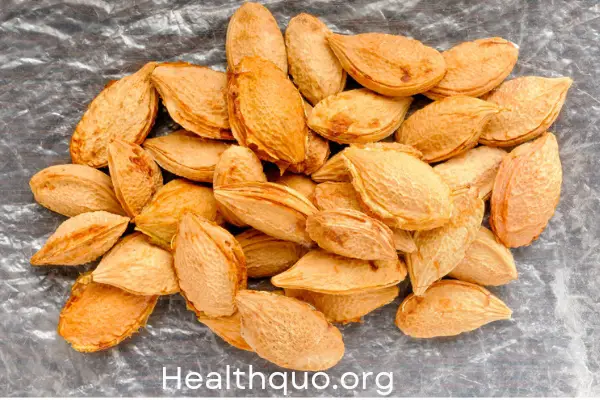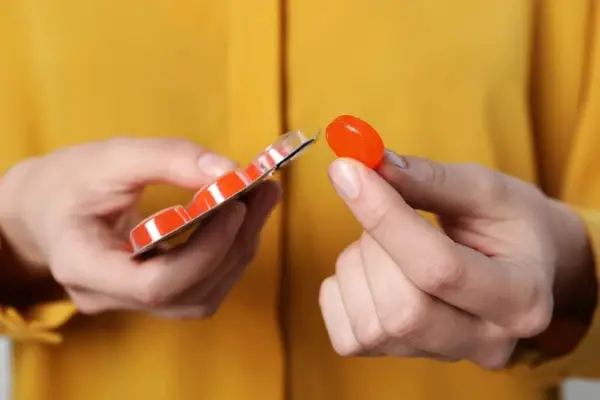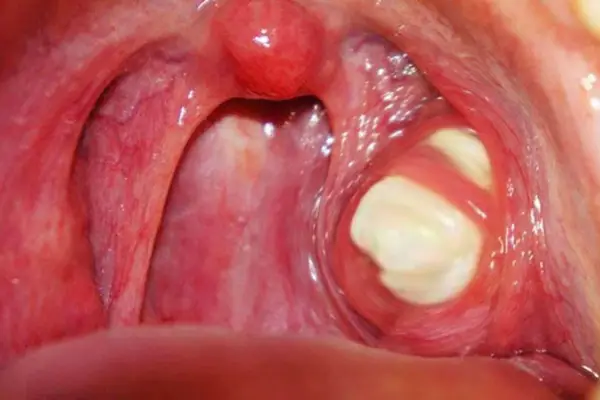Swallowing a plum seed is usually not a cause for alarm. Most of the time, the seed will pass through your digestive system without any health implications.
However, it’s important to monitor for any symptoms such as abdominal pain, vomiting, or constipation. If you experience any discomfort or symptoms, it’s best to consult a healthcare professional.
In the meantime, make sure to stay hydrated and maintain a normal diet, or incorporate a fiber-rich diet to increase your bowel movement. If you have any specific health conditions or concerns, it’s always a good idea to seek medical advice.
What Happens If You Swallow Plum Pit?
Plum seeds are primarily composed of organic materials that are typically resistant to digestion. As a result, they often pass through the gastrointestinal tract without being broken down.
Also, plum pits contain amygdalin, a compound that can release hydrogen cyanide when metabolized. Hydrogen cyanide is highly toxic, and its lethal dose is approximately 1.5 milligrams per kilogram of body weight. However, the amygdalin content in plum seeds varies, and it’s important to note that not all of it converts into hydrogen cyanide.
The amount of cyanide present in plum seeds is about 96.08 mg of cyanide per kg of plum.
The lethal dose of hydrogen cyanide for a 70 kg person is approximately 105 mg. To reach this lethal dose from plum seeds, a person would need to consume about 1.09 kg of plum seed material.
Given that each plum seed weighs about 20 g, this translates to approximately 54.64 plum seeds.
This calculation assumes that all the amygdalin in the seeds is converted into hydrogen cyanide, which is unlikely. In reality, only a portion of the amygdalin would be metabolized into hydrogen cyanide.
Swallowing a plum seed may cause mild irritation in the gastrointestinal tract, especially if the seed is large or has sharp edges. However, this is usually not a serious concern unless you experience persistent symptoms.
There is a risk of bowel obstruction, particularly in children or individuals with a history of gastrointestinal issues, if a plum seed becomes lodged in the intestines. This is more likely with multiple seeds or in cases of reduced intestinal motility.
When to Seek Medical Help
If you or someone you know has swallowed a plum seed, it’s important to monitor for symptoms that may necessitate medical evaluation. Seek medical attention if you experience:
Abdominal Pain: Persistent, severe, or increasing abdominal pain could suggest a blockage or irritation in the gastrointestinal tract.
Vomiting: Repeated vomiting, especially if it’s severe or contains blood, may indicate a potential obstruction or other complications.
Difficulty Swallowing or Breathing: If the seed is causing a blockage in the throat or esophagus, it can lead to difficulty swallowing or breathing.
Constipation or Diarrhea: Significant changes in bowel habits, especially if accompanied by pain, could indicate a digestive issue.
Blood in Stool: Blood in the stool can be a sign of injury within the digestive tract.
Signs of Infection: Fever, chills, or other symptoms of infection could indicate a complication.
Procedures Used by Healthcare Professionals
Consulting a healthcare professional is crucial if you have concerns about swallowing a plum seed, as they can determine the most appropriate course of action for your specific situation.
X-rays or Other Imaging Tests: Initially, X-rays or other imaging tests are often used to locate the plum seed and assess for any blockages or damage in the digestive tract.
Endoscopy: A flexible tube with a camera (endoscope) is inserted into the digestive tract to directly view and possibly remove the seed.
Laryngoscopy: If the seed is suspected to be in the upper throat or affecting the airway, a laryngoscopy can be performed to examine these areas.
Barium Swallow Test: This involves ingesting a barium solution to enhance X-ray images, providing detailed views of the esophagus, stomach, and small intestine.
Medication: Medication may be prescribed to treat symptoms like pain or to address an infection.
Surgery: In rare cases where there is significant obstruction or complications, surgical intervention might be necessary
Prevention and Safety Tips
To prevent any potential health risks associated with plum seeds and other fruit seeds containing amygdalin, follow these prevention and safety tips:
Avoid Eating Fruit Seeds or Pits: Be cautious not to ingest the seeds or pits of plums, apricots, cherries, peaches, and apples, as they contain amygdalin.
Educate Children: Teach children that they should not eat fruit seeds or pits and supervise them while they are eating fruits that contain these seeds.
Dispose of Seeds Properly: After eating these fruits, properly dispose of the seeds or pits to prevent accidental ingestion, especially by children or pets.
Be Mindful of Seed Quantities in Homemade Preparations: If you use fruit seeds in homemade preparations, such as jams or jellies, ensure that the seeds are completely removed. Some traditional recipes might use small quantities of apricot kernels, for example, but it’s important to know the risks and use them sparingly.
Stay Informed About Risks: Be aware of the potential risks of cyanide poisoning from fruit seeds and pits, and educate yourself about the symptoms of poisoning.
Seek Medical Attention for Accidental Ingestion: If you or someone else accidentally ingests a significant quantity of fruit seeds or experiences symptoms of poisoning, seek medical attention immediately.
Use Caution with Alternative Medicine Products: Be cautious with products that may contain high amounts of apricot kernels or other sources of amygdalin, as these can pose a risk of cyanide poisoning.
Be Aware of Choking Hazards: Fruit seeds can also pose a choking hazard, especially for young children, so always be vigilant when children are consuming fruits with seeds.





